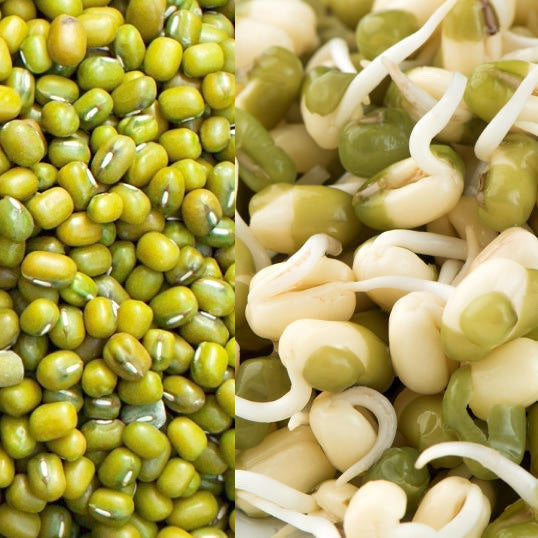Mung beans are a nutritional powerhouse — high in plant protein, fiber, antioxidants, and easy on the gut. Ayurveda calls them the Queen of Pulses. We call them your new pantry essential.
You may have heard of them as moong in South Asia. These tiny green legumes are a staple in Asian and Ayurvedic cuisine for thousands of years. But they’re not just traditional — they’re transformational.
🌱What Are Mung Beans?
Mung beans (Vigna radiata) are small, round, green beans from the legume family. When cooked, they turn tender, creamy, and slightly sweet. When sprouted, they’re crunchy and full of life. Think of them as the gentle powerhouse of the bean world.
💪Why Mung Beans Deserve Their Superfood Status:
- High in Plant Protein — About 14g per cooked cup
- Packed with Fiber — Up to 15g per cup for smoother digestion
- Rich in Micronutrients — Folate, magnesium, manganese, B1, potassium
- Full of Antioxidants — Helps combat oxidative stress and inflammation
- Naturally Low-Glycemic — Keeps blood sugar stable
🌿Bonus? They're Naturally:
- Gluten-free
- Low-acid and easy on the gut
- Alkaline-forming (hello, balance!)
- One of the least gas-forming beans when soaked, sprouted, or stewed
🧘🏽What Ayurveda Says
In Ayurveda, mung is called the Queen of Pulses. It’s sattvic (calming), tridoshic (balances all constitutions), and light enough to be used in cleanses, recoveries, and daily meals. Mung + rice = complete protein.
🥣 Be Sure to Include Mung Beans in Your Diet
- Khichari (Indian-style mung & rice risotto)
- Mung bean daal (stew)
- Stir-fried sprouts
- Creamy soups and broths (👋Moong Pani!)
- Baked into breads or blended into smoothies
👶 Did You Know?
Mung beans are the only beans that are given to infants and children as their early solid food. Because, mung beans are the most easiest to digest beans, and are gentle on the guts. Good for babies, good for us!
💦 Soaking Mung Beans is Better For You
Best to soak mung beans for a few hours in warm water. Drain the water. Add fresh water and proceed to cooking them. Soaking leaches out the lectins (which tend to cause gas in most legumes), and also leaches our long chain sugars reducing its carb content.
Cheers to good health!









